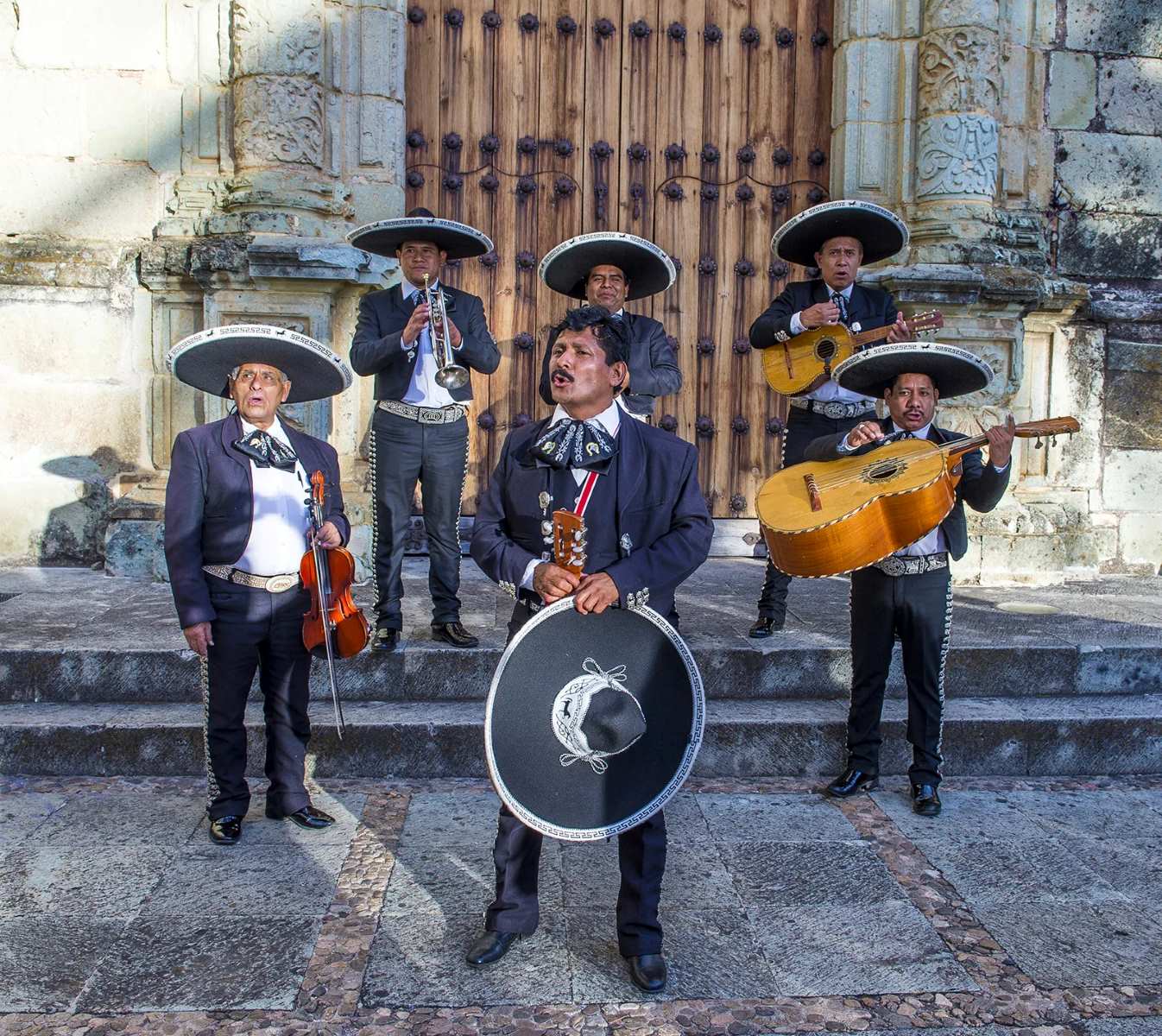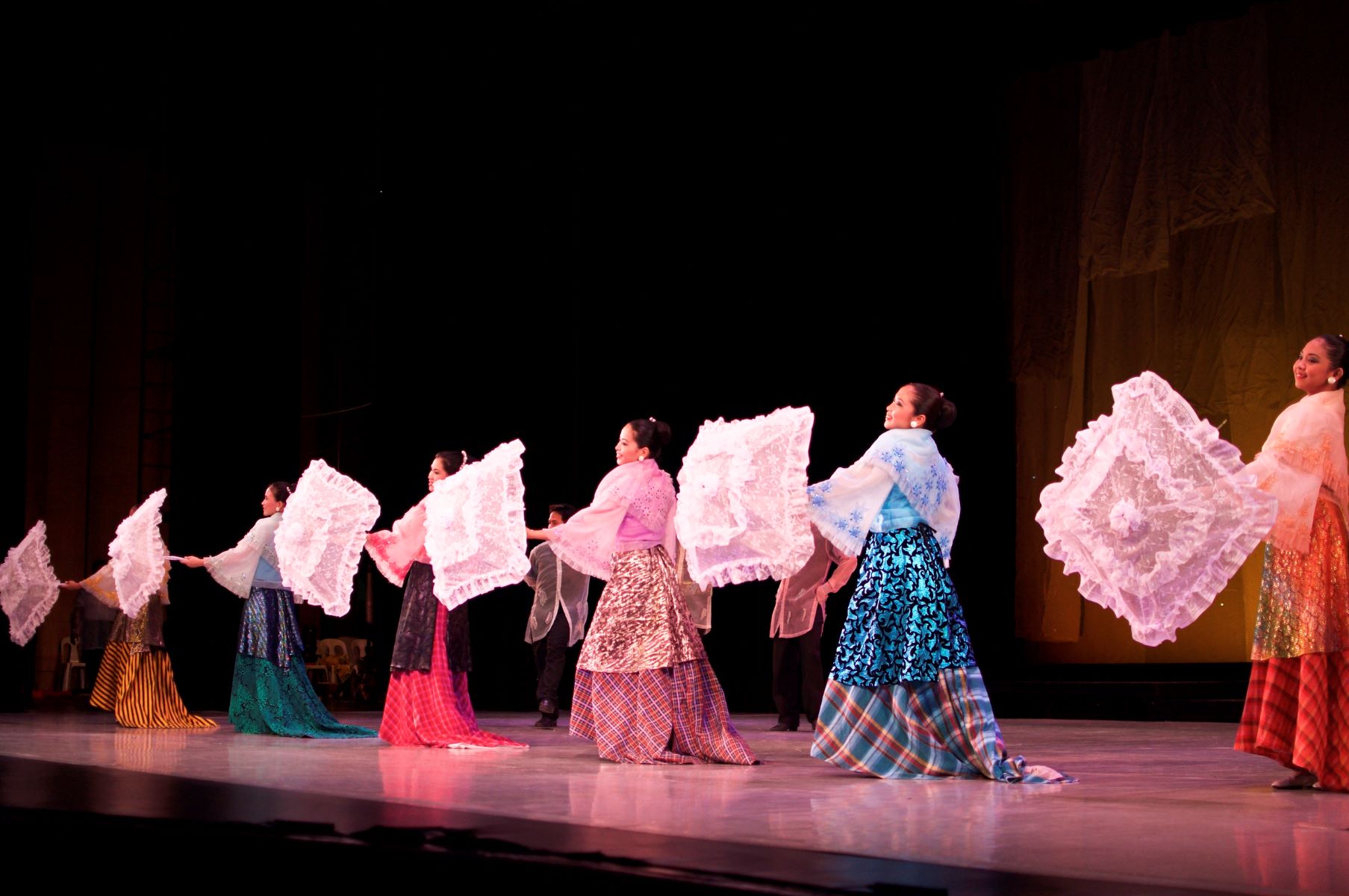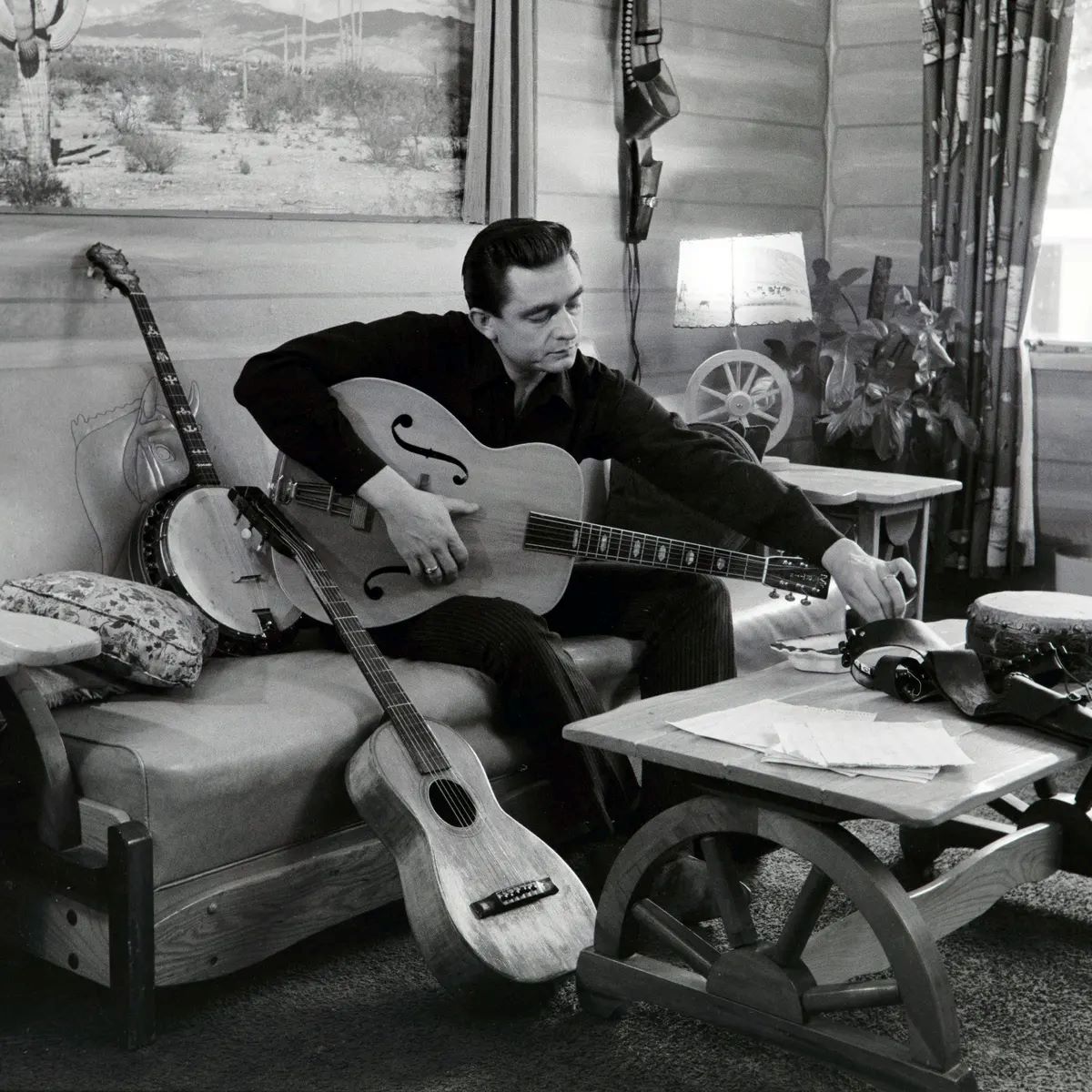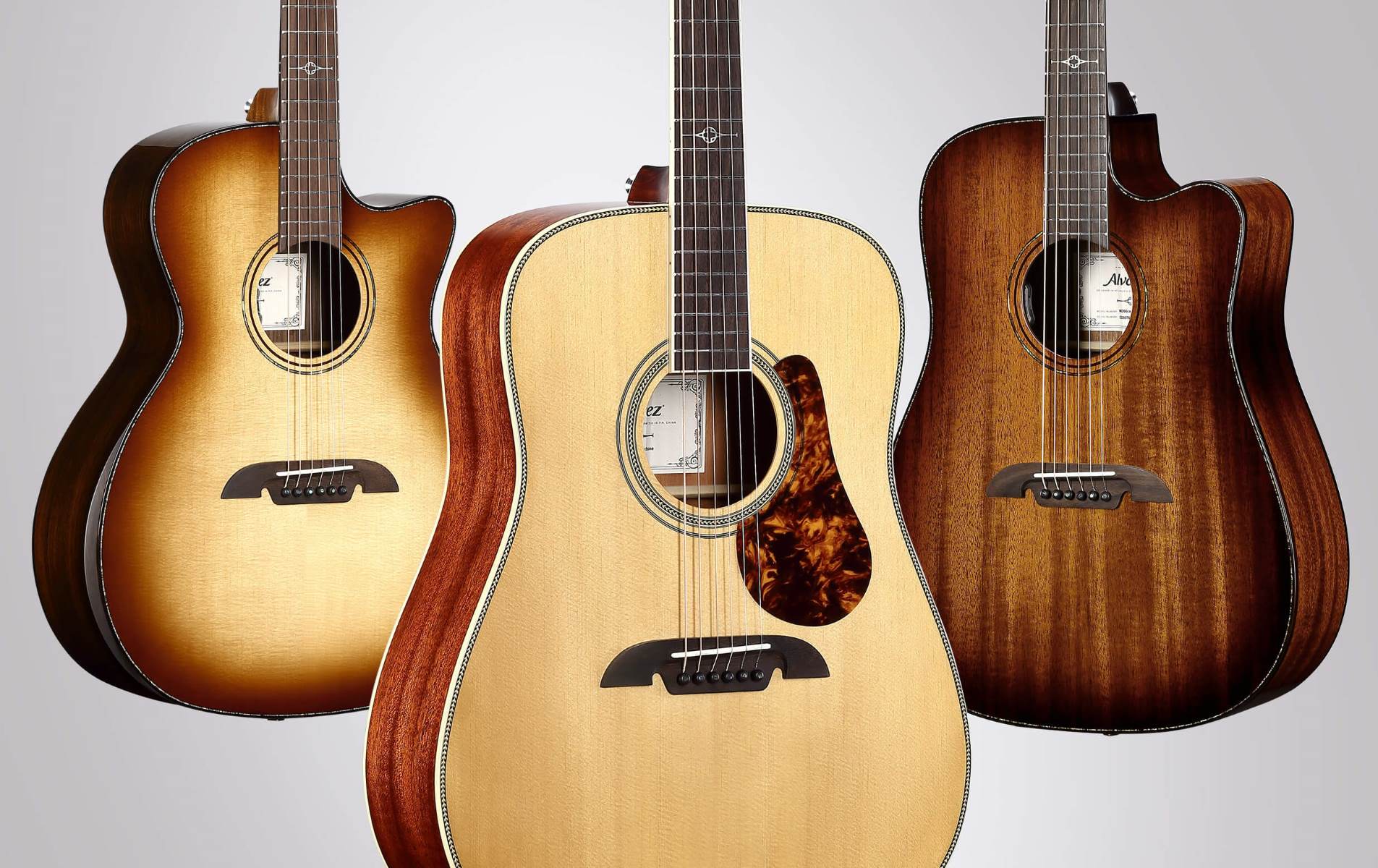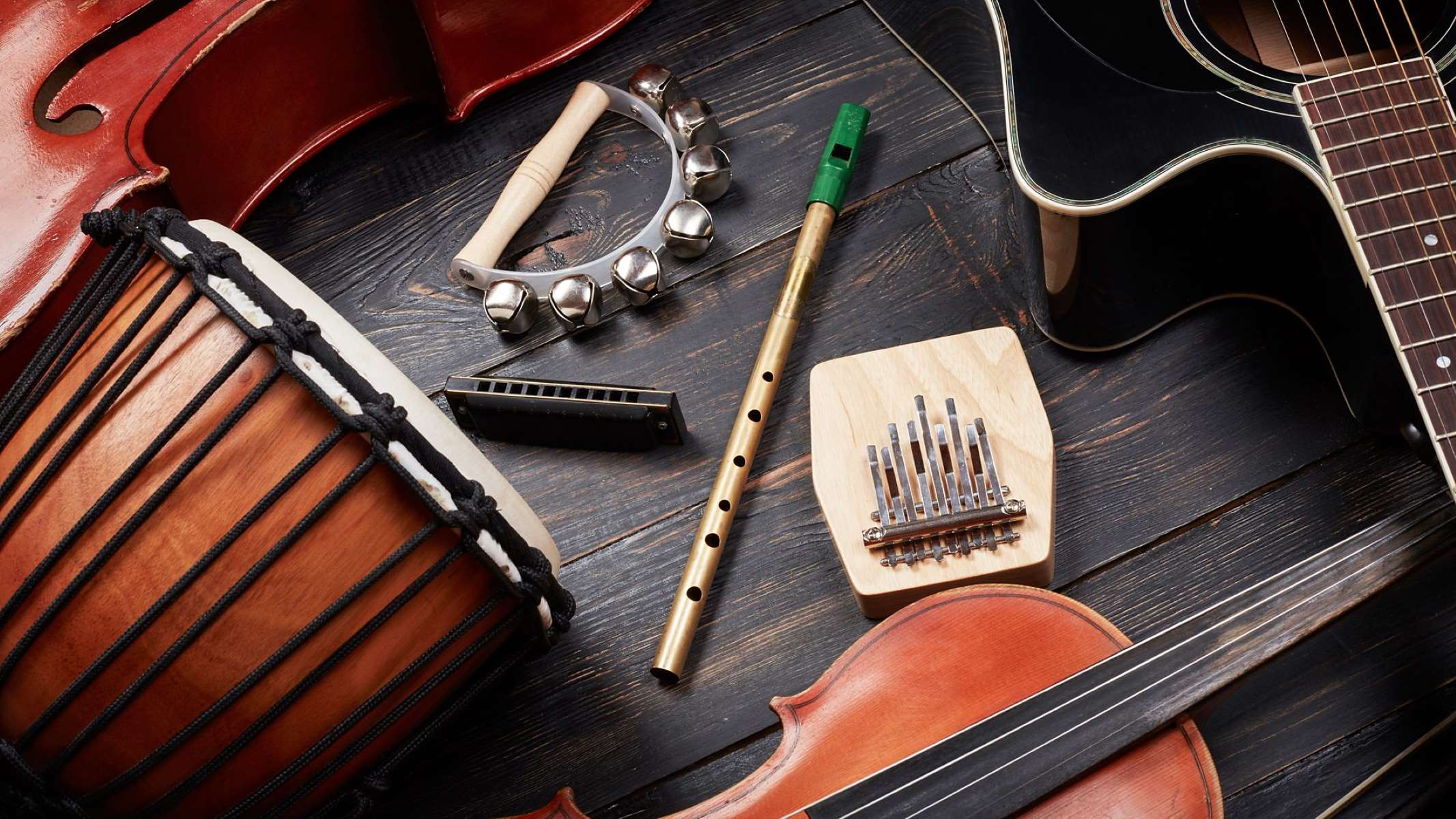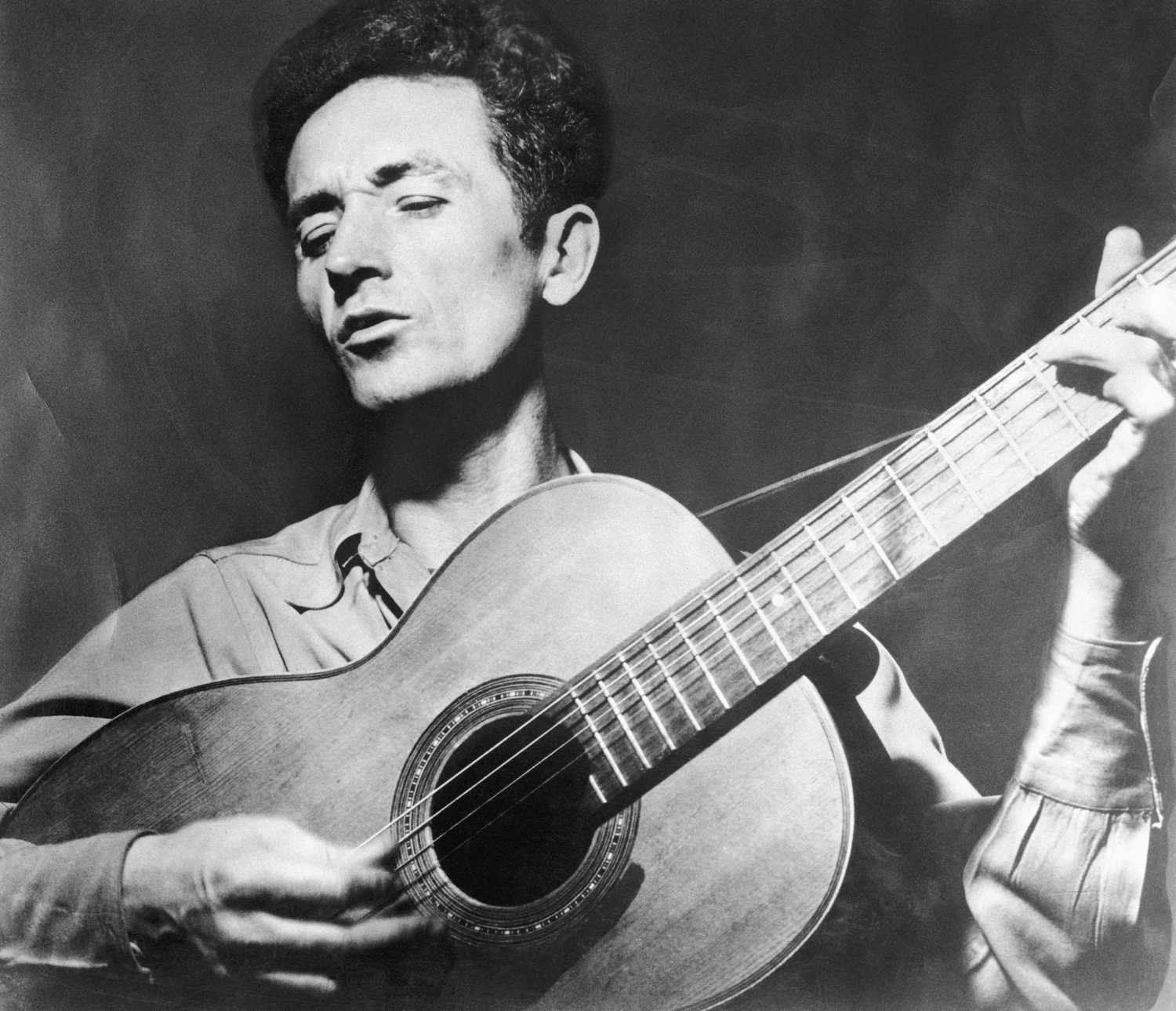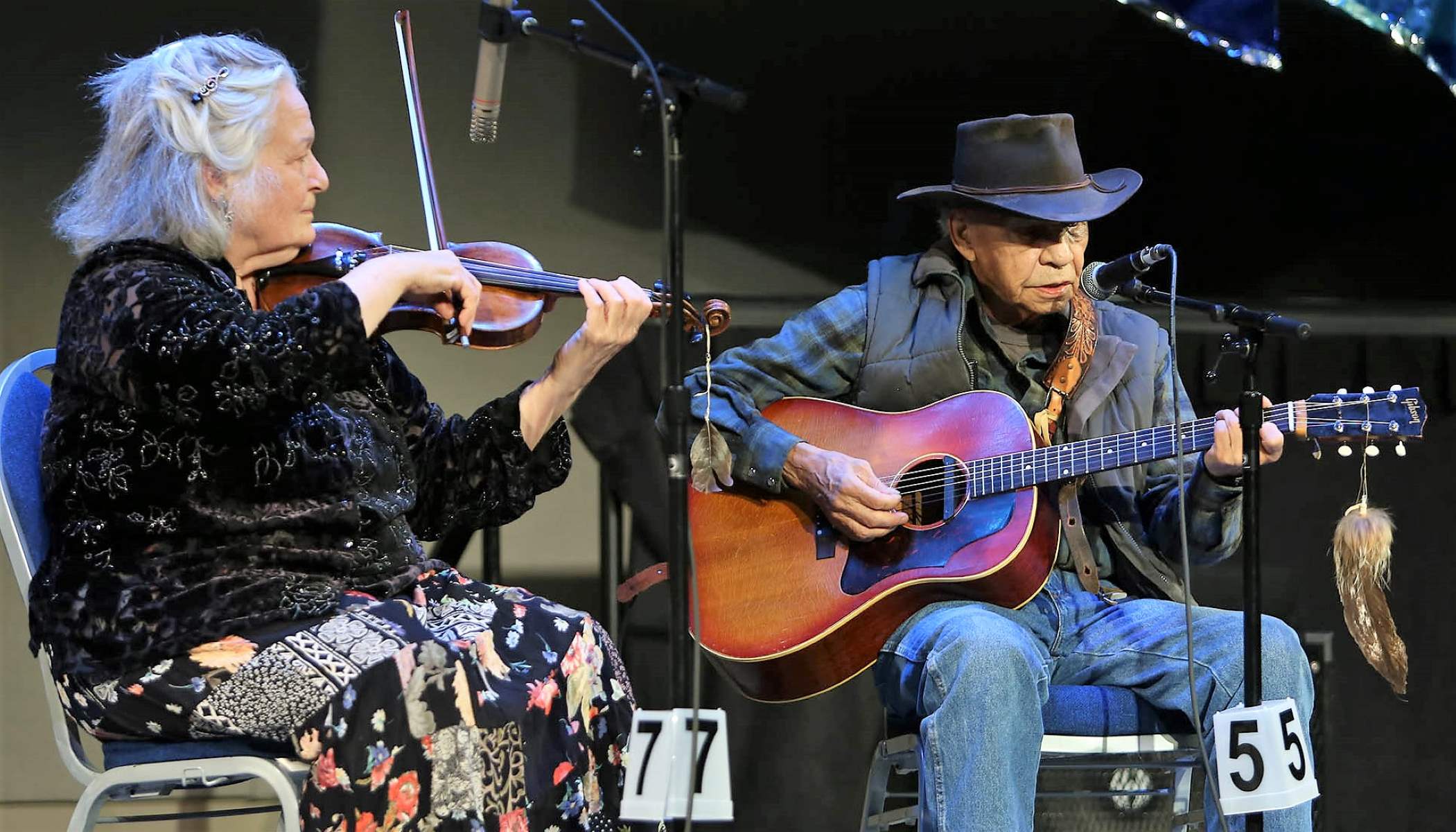

Folk
What Is Pagan Folk Music
Modified: February 15, 2024
Discover the enchanting world of Pagan folk music, rooted in ancient traditions and celestial melodies. Dive into the captivating sounds of this timeless genre that celebrates the spirit of folk.
(Many of the links in this article redirect to a specific reviewed product. Your purchase of these products through affiliate links helps to generate commission for AudioLover.com, at no extra cost. Learn more)
Table of Contents
Introduction
Pagan folk music, with its roots in ancient folk traditions and pagan spirituality, has continued to captivate listeners with its enchanting melodies, mystical lyrics, and powerful connection to nature. This genre of music is a celebration of folk traditions woven with pagan belief systems, creating a unique and captivating sound that resonates with a diverse audience.
Pagan folk music embraces a wide range of influences and styles, incorporating elements from traditional folk music, Celtic and Nordic traditions, as well as modern pagan practices. It combines acoustic instruments, ethereal vocals, and poetic lyrics to create a sense of connection with the Earth, the seasons, and the spiritual realms.
This article explores the world of pagan folk music, providing an overview of its definition, historical roots, characteristics, instruments used, themes and lyrics, as well as highlighting contemporary pagan folk music artists. Additionally, we will delve into the influence and popularity of this genre, shedding light on its significance in the modern music scene.
Definition of Pagan Folk Music
Pagan folk music is a genre that combines elements of traditional folk music with pagan spiritual beliefs and practices. It is characterized by its connection to nature, ancient rituals, and mystical themes. This genre often draws inspiration from Celtic and Norse traditions, incorporating instruments such as acoustic guitars, fiddles, flutes, and drums.
At its core, pagan folk music is a celebration of the natural world and the cycle of seasons. It explores themes of paganism, earth-based spirituality, mythology, and folklore. The lyrics often tell stories of ancient gods and goddesses, magical creatures, and the connection between humans and the natural world.
What sets pagan folk music apart is its intention to create an immersive and spiritual experience for the listener. The lyrics and melodies aim to evoke emotions, transport the audience to otherworldly realms, and establish a connection with the divine. Pagan folk music often incorporates harmonic and melodic techniques that echo ancient chants and hymns, adding to the enchanting and ethereal atmosphere.
It’s important to note that pagan folk music is not limited to a specific cultural or religious tradition. While it draws inspiration from Celtic and Norse traditions, it is a genre that is inclusive and open to interpretation. Artists from various backgrounds and beliefs contribute to the vibrant and diverse landscape of pagan folk music.
Overall, the definition of pagan folk music lies in its ability to blend traditional folk melodies and instruments with spiritual themes rooted in paganism and nature worship. It is a genre that seeks to awaken a sense of spirituality and connection to the natural world, offering a unique and enchanting musical experience.
Historical Roots of Pagan Folk Music
Pagan folk music finds its roots in ancient traditions and cultural practices that date back centuries. The historical origins of this genre can be traced to the folk music of various European cultures, particularly those with strong pagan and nature-based belief systems.
One of the primary influences on pagan folk music comes from Celtic traditions, which have a rich heritage of spiritual beliefs and folklore. The ancient Celts honored the natural world and worshipped a pantheon of deities associated with different elements of nature. Their music reflected these beliefs, often featuring haunting melodies, intricate instrumentation, and lyrics that spoke of their connection to the land and its spirits.
Similarly, Norse traditions, rooted in the mythology of the Vikings and Germanic tribes, have also played a significant role in shaping pagan folk music. Norse mythology is filled with tales of gods and goddesses, epic battles, and the importance of honoring nature. Songs and chants were used in religious ceremonies and rituals, creating a profound connection between music and spirituality.
During the Christianization of Europe, pagan beliefs were suppressed, but they were resilient and continued to be practiced in secret. Folk music became a way for people to preserve their ancestral traditions and pass them down through generations. Songs and dances that were once part of pagan rituals were adapted to fit within the acceptable framework of the Christian church, allowing the folk traditions to survive.
It wasn’t until the revival of interest in folklore and traditional music in the 19th and 20th centuries that pagan folk music experienced a resurgence. Scholars and musicians began to collect and study the old songs, giving them new life and introducing them to a wider audience. This resurgence coincided with a growing interest in paganism, nature spirituality, and alternative belief systems, which led to the emergence of contemporary pagan folk music.
Today, pagan folk music continues to evolve and expand, drawing inspiration from both ancient traditions and modern interpretations of paganism. Artists are incorporating a wide range of musical styles and influences, creating a vibrant and diverse landscape within the genre.
Overall, the historical roots of pagan folk music lie in the ancient folk traditions and cultural practices of Europe, particularly those with a strong connection to pagan and nature-based beliefs. These traditions have been preserved through generations and experienced a revival in recent years, leading to the creation of a unique and captivating genre of music.
Characteristics of Pagan Folk Music
Pagan folk music is characterized by its distinct features, which set it apart from other genres of folk music. These characteristics contribute to the enchanting and mystical atmosphere that defines this genre:
- Nature-inspired: Pagan folk music is deeply rooted in the natural world. The melodies and lyrics often reflect the changing seasons, the beauty of landscapes, and the power of the elements. The music aims to evoke a sense of connection with nature and the spirits that reside within it.
- Mystical and spiritual themes: Pagan folk music explores themes of spirituality, paganism, mythology, and folklore. The lyrics tell stories of ancient gods and goddesses, magical creatures, and ancient rituals. The music serves as a vehicle for expressing and exploring the mysteries of the universe and the human experience.
- Acoustic instrumentation: Acoustic instruments play a significant role in pagan folk music. The use of instruments such as acoustic guitars, fiddles, flutes, harps, and drums adds an organic and earthy quality to the music. These instruments create a warm and intimate sound that complements the lyrical themes of the genre.
- Ethereal vocals: Pagan folk music often features ethereal and haunting vocal performances. The singers employ techniques such as melisma, vibrato, and falsetto to create a mesmerizing and otherworldly sound. The vocals serve as a conduit for the emotions and spiritual depths expressed in the lyrics.
- Poetic and symbolic lyrics: The lyrics of pagan folk songs are often poetic and rich in symbolism. They draw on mythological imagery, nature metaphors, and mystic concepts to convey deep meanings. The words are carefully crafted to evoke an emotional response and invite contemplation of the spiritual and natural realms.
- Ritualistic atmosphere: Pagan folk music has an inherent ritualistic quality. The repetitive rhythms, chant-like melodies, and use of harmonic drones create a trance-like state, allowing listeners to connect with their inner selves and the spiritual forces invoked within the music.
These characteristics come together to create a unique and captivating musical experience in pagan folk music. The combination of nature-inspired themes, acoustic instrumentation, ethereal vocals, and poetic lyrics work in harmony to transport the listener to a realm where ancient traditions and spiritual beliefs converge.
Instruments Used in Pagan Folk Music
Pagan folk music encompasses a range of acoustic instruments that contribute to its enchanting and earthy sound. These instruments are carefully selected to create a harmonious blend of melodies and rhythms that evoke a connection with nature and ancient spiritual traditions. Here are some of the instruments commonly used in pagan folk music:
- Acoustic Guitar: The acoustic guitar is a staple instrument in pagan folk music. Its warm and resonant tones provide a melodic foundation for the music, often incorporating fingerpicking or strumming techniques. The guitar adds depth and richness to the overall sound.
- Fiddle: The fiddle, also known as a violin, adds a haunting and expressive element to pagan folk music. Its soaring and emotive melodies can evoke a wide range of emotions and create a sense of connection with ancient traditions. The fiddle often takes on a prominent role in instrumental sections.
- Flute: The flute, with its delicate and ethereal sound, is another commonly used instrument in pagan folk music. It can evoke the gentle rustling of leaves or the airy call of birds. The flute’s melodies often swirl and weave through the music, evoking a sense of the natural world and its spirits.
- Harp: The harp adds a mystical and celestial quality to pagan folk music. Its shimmering and resonant tones create a sense of transcendence and can transport listeners to a realm of ancient myths and legends. The harp provides intricate and delicate melodies that complement the spiritual themes of the music.
- Drums and Percussion: Drums and percussion instruments add rhythm and energy to pagan folk music. They provide a driving force that can evoke the heartbeat of the Earth or the pounding of ancient rituals. Bodhráns, frame drums, and hand drums are commonly used, adding a tribal and primal element to the music.
- Other Instruments: Other instruments such as mandolins, bouzoukis, dulcimers, and various types of whistles may also be used in pagan folk music. These instruments contribute to the diverse and eclectic nature of the genre, adding unique textures and tones to the overall sound.
The combination of these instruments creates a tapestry of sounds in pagan folk music, weaving together melodies and rhythms that honor the natural world and ancient spiritual traditions. Each instrument brings its own character and symbolism, contributing to the enchanting and evocative atmosphere of the genre.
Themes and Lyrics in Pagan Folk Music
Pagan folk music explores a wide range of themes through its lyrical content, delving into the realms of spirituality, mythology, nature, and the human experience. The lyrics often carry deep symbolism and poetic imagery, inviting listeners to contemplate the mysteries of existence. Here are some common themes found in pagan folk music:
- Pagan Spirituality: Pagan folk music embraces the belief systems and spiritual practices of ancient pagan traditions. The lyrics connect with the gods and goddesses of mythologies, paying homage to their power and influence. They often explore the interconnectedness of all living beings and the importance of honoring the natural world.
- Nature Mysticism: The natural world holds a significant place in pagan folk music. The lyrics celebrate the beauty and power of the earth, the changing of the seasons, and the cycles of life. They evoke a sense of reverence for the elements and the spirits that dwell within them, fostering a deep connection to the natural world.
- Mythology and Folklore: Pagan folk music draws inspiration from ancient myths and legends. The lyrics often tell stories of heroic quests, mythical creatures, and ancient battles. They bring to life the gods and goddesses of various pantheons and explore the moral lessons and archetypal figures found in folklore.
- Ritual and Ceremony: Many pagan folk songs contain references to rituals and ceremonies. The lyrics describe ancient practices and the significance behind them. They invoke a sense of mysticism and often aim to create a transformative experience for the listener, mirroring the power of ancient rituals in a contemporary context.
- Emotional Depths: Pagan folk music delves into the vast spectrum of human emotions. The lyrics can express longing, love, sorrow, joy, and rebellion. They explore the complexities and struggles of the human experience, inviting listeners to reflect on their own emotions and journey through life.
- Spiritual Awakening: The lyrics of pagan folk music often speak to the journey of self-discovery and spiritual awakening. They encourage listeners to connect with their inner selves, explore their own spirituality, and seek a deeper understanding of the mysteries of existence. They inspire a sense of inner transformation and personal growth.
With their poetic and symbolic nature, the lyrics in pagan folk music serve as a vehicle for storytelling and self-reflection. They transport listeners to ancient times, invoking a sense of wonder and inviting exploration of the spiritual and natural realms. The themes and lyrics in pagan folk music provide a rich tapestry of emotions and ideas, making it a genre that resonates deeply with those seeking a connection to nature and the mysteries of life.
Contemporary Pagan Folk Music Artists
Pagan folk music has seen a resurgence in recent years, with a growing number of talented artists exploring and expanding the genre. These musicians draw inspiration from ancient traditions, infuse their own unique styles, and create captivating musical experiences that resonate with a diverse audience. Here are a few contemporary pagan folk music artists to highlight:
- Wardruna: Hailing from Norway, Wardruna is known for their mesmerizing and atmospheric music that draws inspiration from Norse mythology and ancient spiritual practices. Their use of traditional instruments, haunting vocals, and Nordic folklore creates a transcendent and powerful musical journey.
- Faun: Faun, a German band, combines elements of medieval music, folk, and pagan themes. Their ethereal vocals and enchanting combination of acoustic instruments create a unique and captivating sound that transports listeners to a world of myth and magic.
- Omnia: Omnia is a Dutch band that weaves together elements of folk, pagan, and world music into their enchanting melodies. Their lyrical themes often revolve around nature, mythology, and environmental activism, empowering listeners with songs that celebrate the Earth and call for harmony.
- Heilung: Heilung is a Danish band that creates ritualistic and immersive performances, channeling the sounds and spirits of ancient ceremonies. Their unique blend of music, experimental vocals, and historical accuracy captivates audiences and creates a truly otherworldly experience.
- Damh the Bard: Based in the UK, Damh the Bard is an influential figure in contemporary pagan folk music. His poetic lyrics, heartfelt vocals, and skillful use of acoustic instruments create a deep connection to the natural world and the spiritual traditions of the British Isles.
- Eluveitie: Eluveitie, a Swiss band, blends the melodic elements of folk metal with pagan and folk influences. Their energetic and dynamic music features a wide range of instruments, including traditional folk instruments like hurdy-gurdy and bagpipes, creating a powerful fusion of ancient and modern sounds.
These are just a few examples of the diverse range of contemporary pagan folk music artists. Each artist brings their own unique interpretation and style to the genre, contributing to its ever-evolving landscape. Their music allows listeners to immerse themselves in the timeless traditions of the past while connecting with their own spiritual journey and the beauty of the natural world.
Influence and Popularity of Pagan Folk Music
Pagan folk music has gained a growing following and has had a significant influence on the modern music scene. Its unique blend of ancient traditions, spiritual themes, and enchanting melodies have struck a chord with listeners worldwide. Here are some key factors contributing to the influence and popularity of pagan folk music:
- Revival of Folk and Traditional Music: The resurgence of interest in folk and traditional music in recent years has created a favorable environment for pagan folk music to thrive. Pagan folk artists have tapped into this resurgence, infusing their music with ancient spiritual elements and captivating storytelling.
- Connection to Nature and Spirituality: In an increasingly fast-paced and technologically driven world, the deep connection to nature and spirituality found in pagan folk music offers a respite and a means of reconnection. The music resonates with those seeking a deeper understanding of themselves and a rekindling of their relationship with the natural world.
- Appeal to Alternative Spiritual Communities: Pagan folk music has gained popularity within alternative spiritual communities, including pagans, neo-pagans, Wiccans, and those drawn to earth-based spirituality. The themes and lyrics of the music align with their beliefs and provide a soundtrack for their ceremonies, rituals, and personal practices.
- Fusion of Contemporary and Traditional Elements: Many pagan folk artists skillfully blend traditional folk elements and instruments with contemporary production techniques and modern musical styles. This fusion creates a fresh and accessible sound that appeals to a broader audience, beyond the specific pagan and folk music communities.
- Influence on Other Genres: Pagan folk music has also had a significant influence on other genres, such as folk rock, neofolk, and even metal. Elements of pagan folk, such as acoustic instrumentation, mystical themes, and ethereal vocals, have found their way into the music of artists outside the genre, further spreading its influence.
- Festival Circuit and Live Performances: Pagan folk music has found a welcoming home on the festival circuit, where its immersive and ritualistic qualities can be fully experienced. Live performances by pagan folk artists create a sense of community and connection among the audience, enhancing the popularity and influence of the genre.
Overall, the influence and popularity of pagan folk music can be attributed to its ability to evoke a sense of enchantment, mysticism, and connection to the natural world. Through its captivating melodies, lyrical themes, and diverse instrumentation, pagan folk music speaks to the human spirit and offers a bridge between ancient traditions and the modern world.
Conclusion
Pagan folk music has emerged as a captivating and influential genre, connecting listeners to ancient traditions, nature, and spirituality. With its enchanting melodies, poetic lyrics, and evocative themes, pagan folk music creates a transcendent and immersive musical experience. Drawing inspiration from Celtic and Norse traditions, this genre weaves together the threads of folk music, pagan spirituality, and mythic storytelling.
Through its unique characteristics, pagan folk music has been able to carve out its own space in the music world. Its influence and popularity can be seen in the growing number of talented artists exploring and expanding the genre. The revival of interest in folk and traditional music has provided a fertile ground for pagan folk music to flourish.
Pagan folk music resonates with listeners seeking a deeper connection with nature and spirituality. Its themes of paganism, nature mysticism, mythology, and ritual invite introspection and reflection, while its ethereal vocals and acoustic instrumentation create a sense of wonder and enchantment. The music has found a loyal following within alternative spiritual communities and has influenced other genres, spreading its influence even further.
Whether experienced through live performances or festival settings, pagan folk music offers a transformative and communal experience. It provides a sanctuary from the fast-paced modern world, allowing audiences to immerse themselves in the timeless traditions of the past and find solace in the rhythms of nature and the mysteries of the human spirit.
In conclusion, pagan folk music has carved out a unique place in the music landscape, captivating listeners with its connection to ancient traditions, mystical themes, and enchanting melodies. As the genre continues to evolve and flourish, it will undoubtedly inspire and resonate with audiences, bridging the gap between the past and the present.

